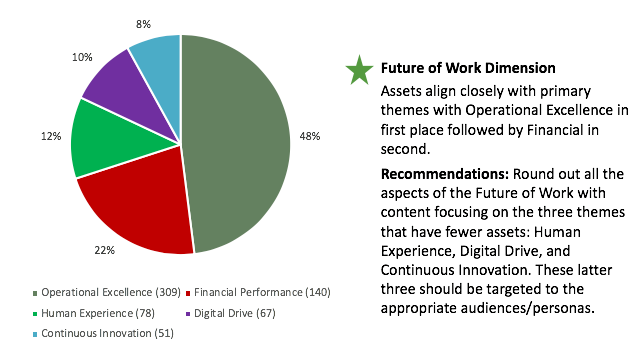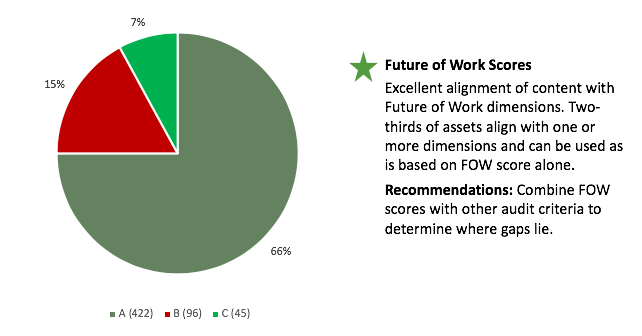 By Brenda Caine, Senior Content Strategist
By Brenda Caine, Senior Content Strategist
Some content marketing teams scramble to create enough content. Others find themselves swimming in so much content that it’s difficult to keep track of which content you can use when it’s crunch time. If you’re in the first group, consider this a “heads up” to catalog your content carefully as your library expands. If you’re in a crowded sea of content, we’re going to throw you a lifeline: the custom content audit.
A standard content audit can provide you with valuable insights into what you have and where you can use it with the best results. If you take the extra step to add custom content criteria, you may make some amazing discoveries and extend the value of your existing content.
Play the Old Standards
The standard content audit and analysis will give you an excellent starting point. What can you use today? Where are the gaps in terms of the buyer’s journey or target audiences? A standard content audit often evaluates these basic criteria:
- Evergreen value. How fresh or out of date is your content? Do the topics still resonate? Will they resonate 6 months or a year from now?
- Quality. Do assets in your library have problems that preclude using them – broken links, poor video quality or subpar writing?
- Buying stage. What stage of the buyer’s journey does the content address, and where are your gaps?
- Persona. Do assets have identifiable targets?
All this is great information—information you need. But you can do so much more if you add custom audit criteria. You can do it in five simple steps.
1. Identify Your Goals
What is the most valuable thing to measure? Here are some possibilities:
- Identify existing content that aligns with a campaign theme.
- Test a hypothesis.
- Evaluate how your content addresses specific buyer pain points.
Even if you hire an agency to perform your audit, you’ll want to handle this first step yourself, and discuss it with the agency to make sure you’re getting exactly what you need from the process.
2. Determine the Audit Criteria
Once you have stated your goals, frame them in a way that can be measured. For example, if you want to see how your content addresses buyer pain points, determine the key themes or terms that auditors can identify during the audit process.
A tech company that provides systems support, for example, might identify how clients are trying to solve problems such as agility, scalability, cybersecurity, modernization, and cloud migration.
3. Develop a Scoring System
How will you quantify your findings? In the above case, you could apply a simple ABC scoring system where A means that an asset aligns with the theme as-is, B means it can align well with some minor tweaks, and C indicates it can’t be used with this theme.
4. Conduct the Audit
This is where the rubber meets the road. Make sure the auditor(s) clearly understand the audit criteria and the scoring system. If you use more than one auditor, run a calibration exercise in which all the auditors audit a small selection of the same assets and compare results, and then coach the outliers to ensure their results will be consistent with the team’s.
5. Analyze the Results
Once you have your master spreadsheet assembled, it’s relatively easy to analyze the quantitative results. Then you’ll need to look at the results, draw some reasonable conclusions, and make recommendations on what to do next.
For example, if your audit shows that you have a plethora of early-stage content made up mostly of white papers and articles, you’ve got a good sense that you’re going to need to create some short-form, interactive early-stage content such as videos, interactive infographics, and listicles and develop a plan to fill in the middle- and late-stage gaps.
Case Study: JLL Helps Clients Prepare for the Future of Work
JLL is a professional services firm specializing in real estate. Its specialists deal in every property type and each facet of transaction, management and advisory services.
The goal. The firm had rolled out a major campaign theme: The Future of Work (FOW). As part of its content audit, JLL wanted to see which assets in the content library it could use for its FOW efforts.
The audit. Before the audit launch, we identified the five FOW dimensions or themes: operational excellence, financial performance, human experience, digital drive, and continuous innovation.
We used the following scoring system:
- A: Aligns with one of more FOW dimensions now and can be used as-is
- B: Needs only minor content changes
- C: Needs major revisions for FOW alignment
- F: Not applicable to the FOW initiative
The quantitative results. First, we looked at the actual number of assets per FOW dimension. This showed us that there were a couple of areas getting a lot of attention and others that were being neglected. Raw numbers appear in parentheses in the chart key. Nearly half the audited assets aligned with one dimension: operational excellence.

Then we looked at the alignment scoring. Of all the assets audited, two-thirds already aligned with one or more of the five FOW dimensions.

The analysis. With a clear view of what the content library already contained, along with the standard attributes such as evergreen scores and buying stages, we were able to create campaign heat maps to show exactly how many assets were immediately available for FOW campaigns and where the gaps lay.
The result. The JLL team was able to confidently draw valuable content from its existing library and see in an instant where they needed to allocate budget for new content development.
I hope this gives you some ideas about how to expand the value of a content audit and use it to continually develop and support sound content marketing strategies.
If you’d like to learn more about how Content4Demand can help you reveal the secrets hidden in your content library, contact us to schedule a quick conversation about content audits. Or to learn more about content audits, check out 5 Steps to a Successful Content Audit.



